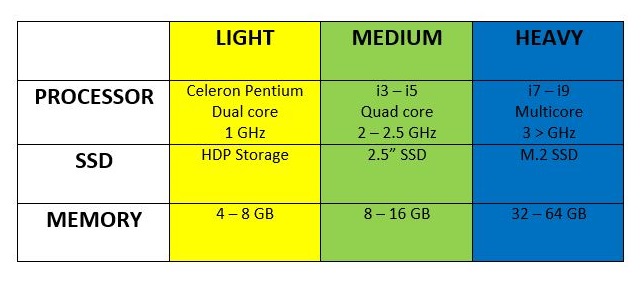Things to look at when purchasing a PC or Laptop
There are 3 important things we look out for when purchasing a laptop. We aren’t going to be discussing things like graphics, screen size, back-lit keyboard and things like that. That is all for you to decide – whether you are going to be using it for gaming or just checking your mail.
- CPU
The processor is actually the biggest thing that helps your machine compute and preform fast. When you look at a processor, many people think that i5 or i7 CPU is a very fast machine. That is not true, you could have an i7 that is actually slower than a i5 CPU. What we look at is the clock speed. Basically, the clock speed tells us how many computes it can preform per second and this is delivered in gigahertz.
My desktop CPU is a core i5 2400 processor, but it’s clock speed is 3.1 gigahertz per second. That is substantial, compared to some of the i7’s that is running at 1.2 or 1.4 gigahertz per second. The class (i5/ i7) of the CPU does make a difference because they are generationally different and are built for different use cases, but it is not solely based on the class.
- SSD
We have 3 types of disks that we can have:
- Hard Disk Drive – Spinning disk
- Solid State Drive – Electrical disk
- M.2 Solid State Drive – Electrical disk
The M.2 is a more advanced technology of the Solid State Drive. It does not connect with normal SATA, it connects directly to the motherboard. It has a direct link to the CPU which allows it to compute faster than a normal SSD.The number 1 thing to remember is that storage size does not matter. A 1 terabyte will be dead slow compared to the M.2.
So depending on your use case, like if you’re using your laptop to just check your mail and play around, a hard disk drive is fine and it is cheaper. If you are aiming for mid-tier performance, go for SSD, it is budget friendly and you get the speed. If you are aiming for top end performance, go for the M.2 SSD.
- Memory
With RAM it is a little different, you cannot have different speeds to make your machine operate faster. Basically it depends on the board as such. The board dictates what type of speed RAM (DDR2/ DDR3) you can attach to your machine, that does not mean you cannot expand your RAM size to make your machine preform faster.
Windows 10 and 11 says 4GB RAM is your bare minimum for windows to operate, so that would be for if you’re checking mail as such. In the mid-tier, aiming for preformance, you should go 4 – 8 GB RAM. High end users doing processor heavy tasks, should go for 16 – 32 GB RAM.
Those are the 3 things to look out for when purchasing a PC or Laptop. Things like screen size, touchscreen, trackpad and other things is all up to you, if you want it as the user.

These are actually the 3 things that gets upgraded when trying to improve the performance of your machine. That is why it is important to look for these things when initially purchasing it, so it allows us to know if we have room to improve later and make our PC somehow faster later on if we need to.
